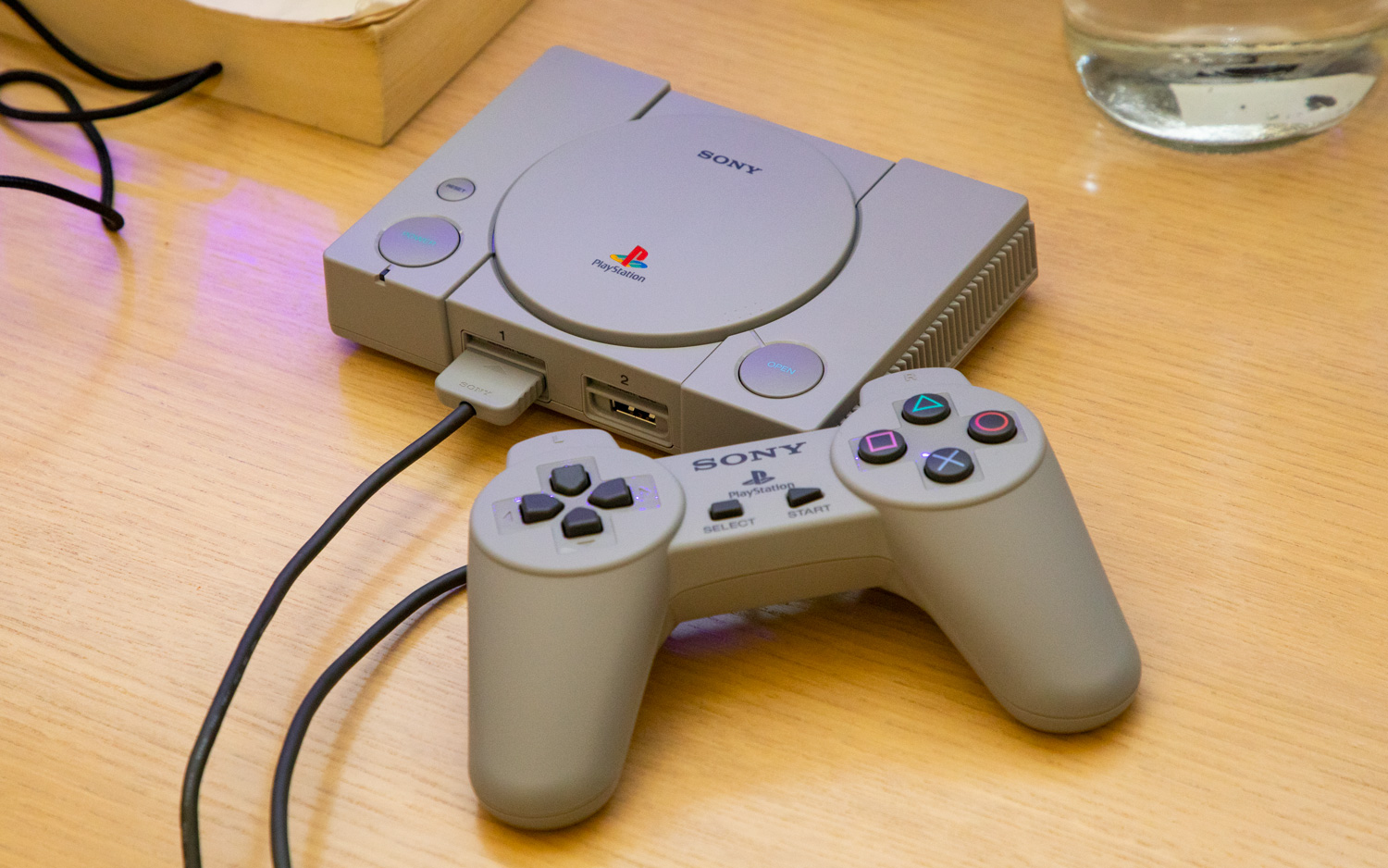Tom's Guide Verdict
Live in your world, just don't play in this one.
Pros
- +
Adorable design
- +
Great build quality
- +
Comes with two controllers
Cons
- -
No software options
- -
Limited save states
- -
Poor game roster
- -
Controllers aren't DualShock
- -
Just 720p resolution
Why you can trust Tom's Guide
Sony didn't topple Nintendo back in the late '90s by cribbing notes from the company's playbook, but that's exactly what it appears to have done with the $99 PlayStation Classic.
Like Nintendo's smash-hit micro-consoles, the PlayStation Classic is a miniaturized version of Sony's 32-bit system that comes loaded with a bundle of games — in this case, 20 — and two controllers that are near-perfect reproductions of their original counterparts.
Of course, Sony is hardly alone here; it's riding a wave of nostalgia that almost every hardware manufacturer with a horse in the '90s console race, from Sega to SNK, has been keen to cash in on as of late.
However, the legacy of the PlayStation is an especially precious one. It ushered the maturation of the medium and the shift to polygons. It proved that games could deliver narratives and audiovisual experiences that rivaled films. It signaled the moment the industry grew up.
Sony has billed the PlayStation Classic as a tribute to that era, and there's no arguing it looks the part. But a poorly curated roster of titles and inconsistent emulation keep it from feeling like it.
Beautiful on the outside
Maybe you had a PlayStation when you were young, or maybe you were a Nintendo 64 kid instead. But when you take this tiny console out of its tiny box, giddy with squee, absolutely none of that matters.
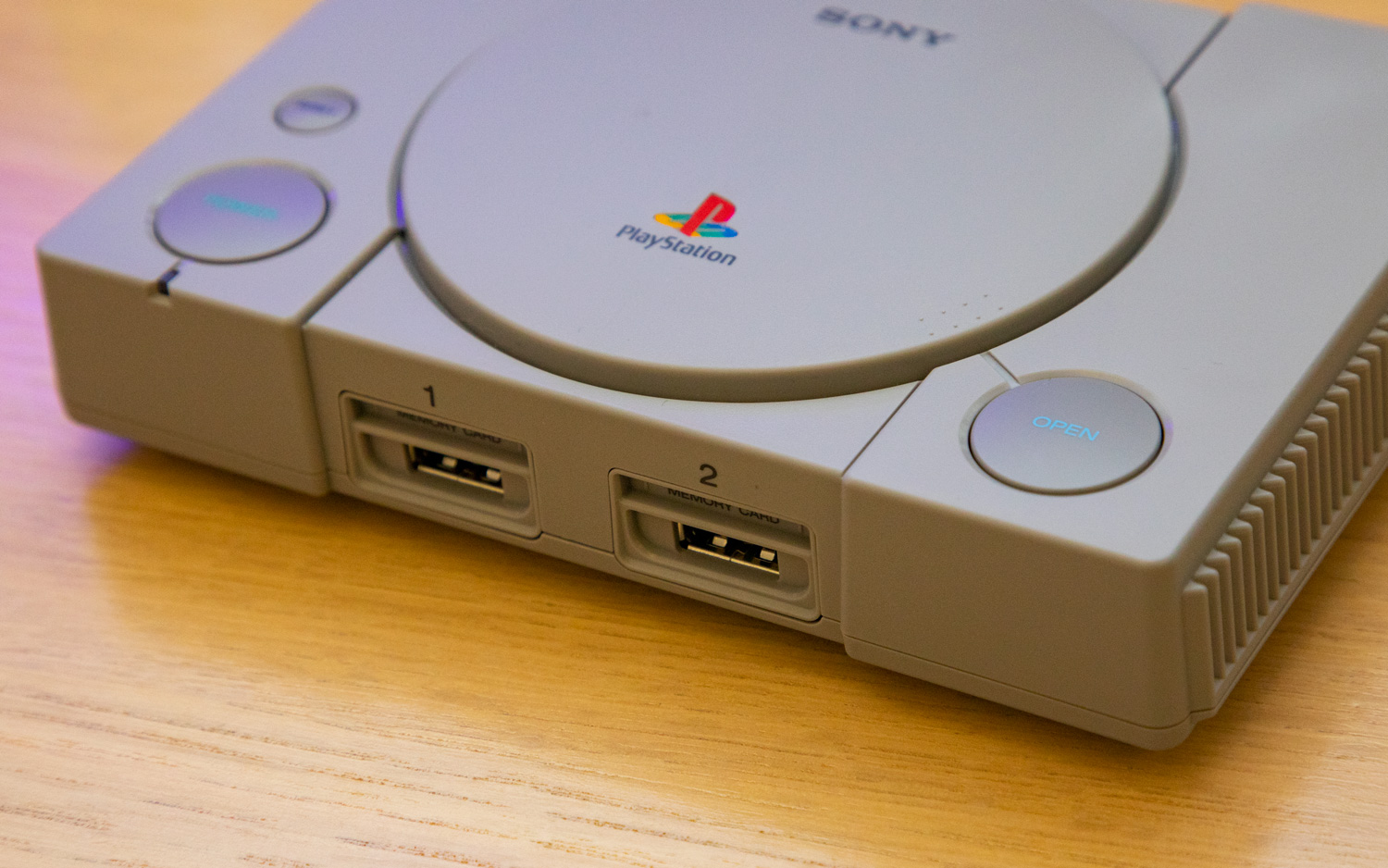
It isn't just cute, though — it's astonishingly accurate for what is ostensibly a plug-and-play toy. The AC-in port is painted a darker shade of gray just like on the real thing, and Sony even carved out a fake door for the parallel I/O bay that was removed in later hardware revisions of the platform.
The PlayStation Classic couldn't possibly be any more adorable, unless it were a spitting image of the PSone.
Cosmetically speaking, the PlayStation Classic is a lovingly crafted tribute to a legendary, quintessentially Sony design in much the same way the NES and SNES Classic are to Nintendo. And it behaves just like those systems, too.
The Reset button calls up the home screen for selecting games, which harkens back to the blue-and-rainbow motif of the BIOS menu the console debuted with. There you can load save states (no Memory Cards here) and fiddle with settings. Meanwhile, the Open button has been cleverly recast to switch virtual CDs for multidisc games, like Final Fantasy VII and Metal Gear Solid.
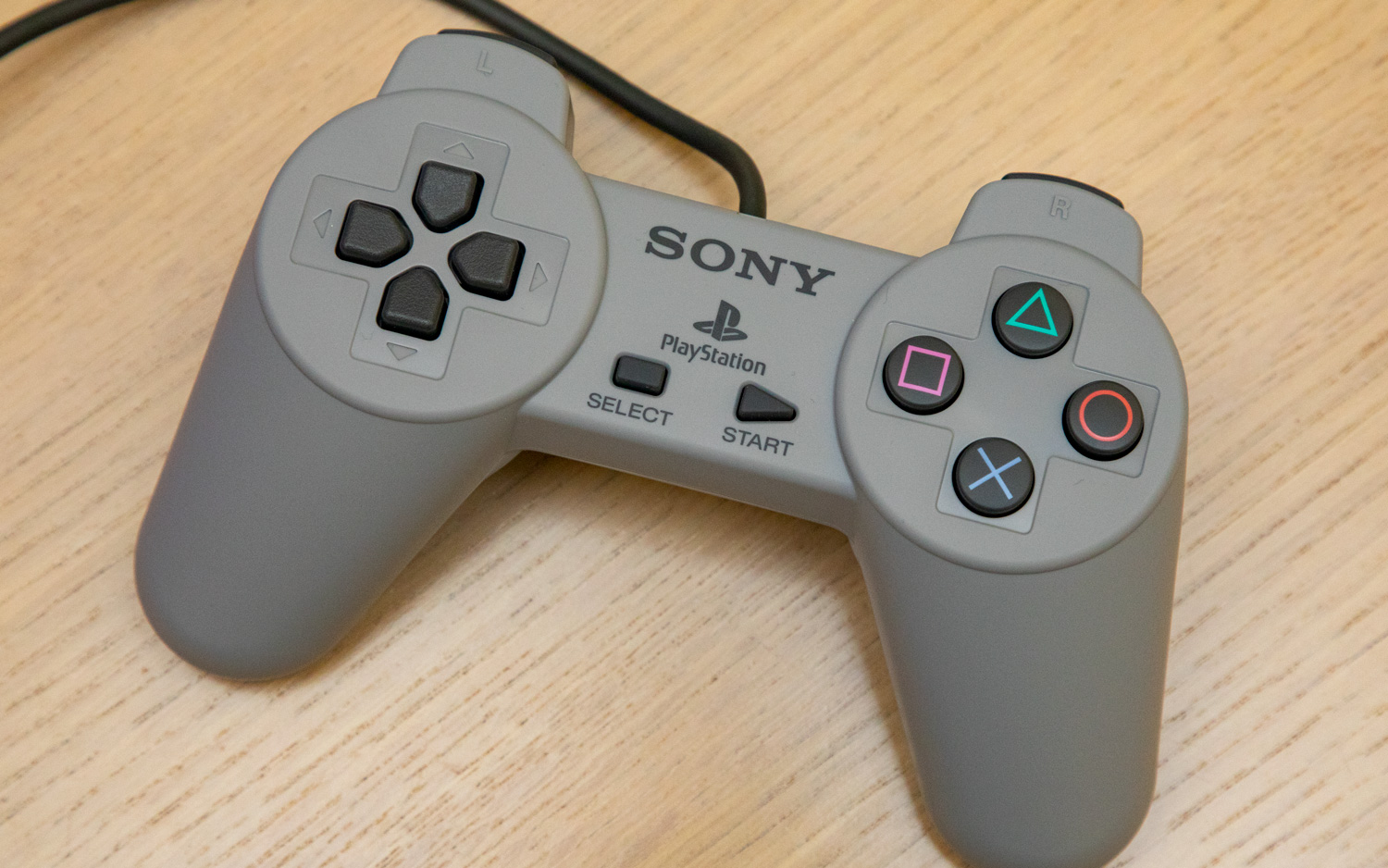
Likewise, the controllers are faithful replicas of the iconic PlayStation pad — but, weirdly, not the one you probably wanted. The Classic is packaged with two non-DualShock controllers — the analog stick-free designs that faded into obscurity after about 1999.
These pads aren't vague approximations — they're very much the real deal, right down to their stabby hand grips and small L2 and R2 triggers. As you'd expect, the lack of analog sticks makes some of the later titles, like Metal Gear Solid and R4 Ridge Racer Type 4, a bit more challenging to play. Not impossible, but also not the way I'm willing to bet many will prefer.
MORE: Retro Showdown — PlayStation Classic vs. NES Classic vs. SNES Classic
But the bigger issue with these controllers — as owners of Nintendo's collector's items are likely all too familiar with — is the shortness of their cables. At 4.5 feet, they're exactly the same length as the SNES Classic's, presumably because you'll have to stay close to the system to hit that Reset button and return to the home screen.
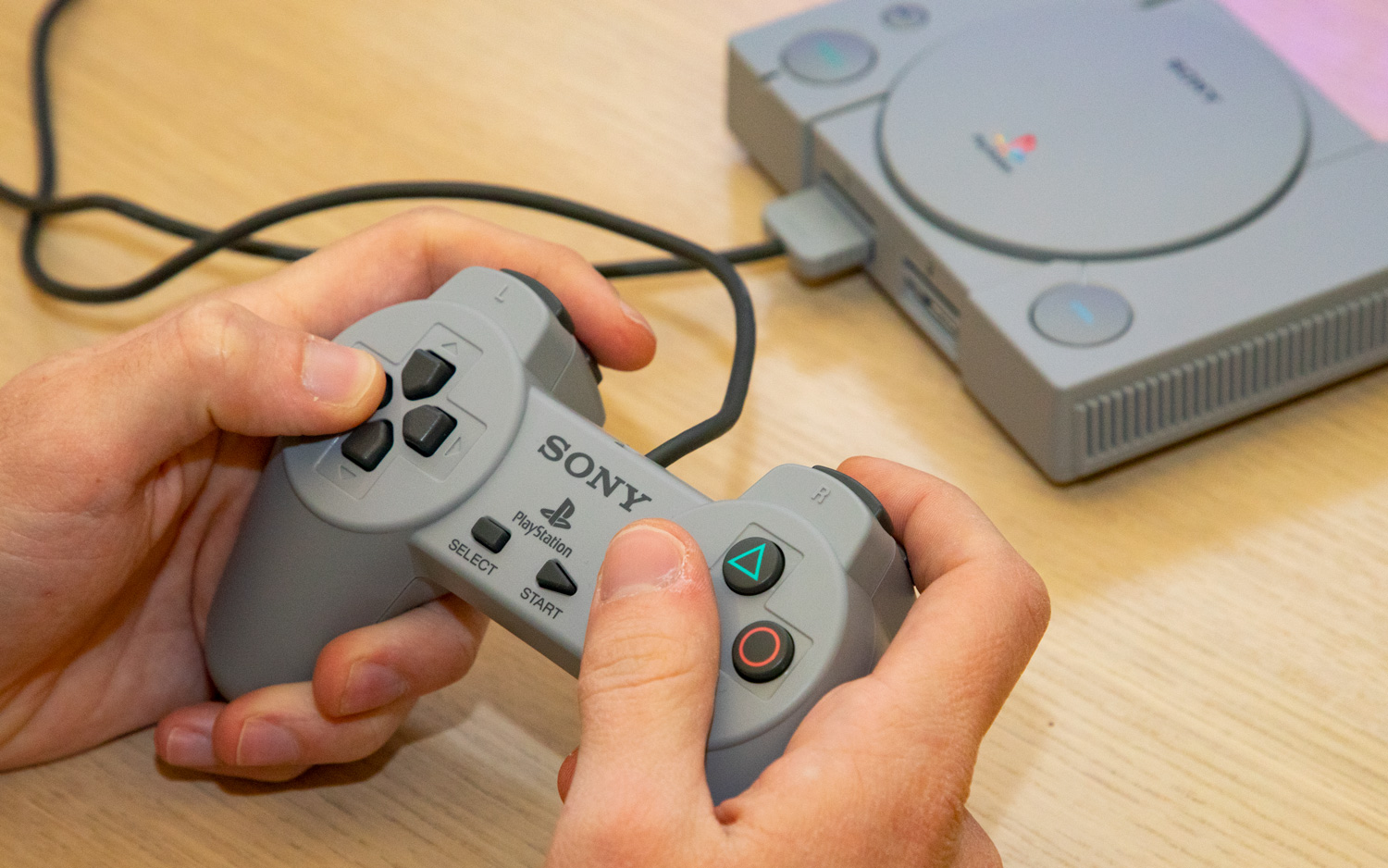
In an unexpectedly modern twist, the controllers connect to the PlayStation Classic over USB Type-A. But before you get excited, they're not compatible with the PlayStation 4, and trying to use one with a PlayStation 3 or PC is dicey. Some inputs work some of the time, while others were completely unresponsive in our experience.
Not like the good old days
With a library as large as the PlayStation's, Sony was never going to settle on a 20-game lineup that would have satisfied everyone. Still, it would have been nice of them to try.
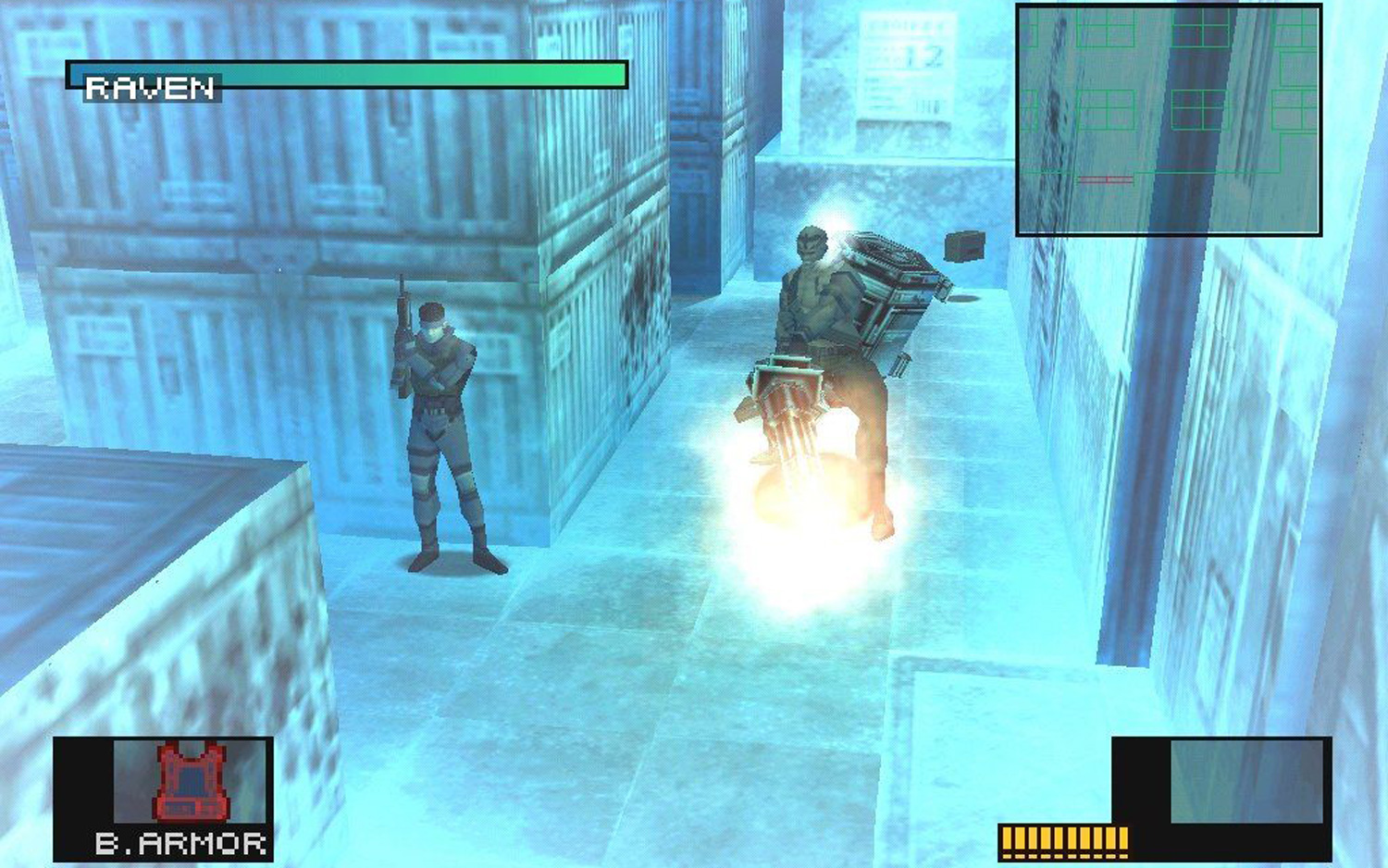
At best, the PlayStation's Classic roster is incomplete; at worst, it's a total mischaracterization of one of the greatest and most beloved gaming consoles of all time. Final Fantasy VII and Metal Gear Solid are obvious inclusions (and ones that have been rereleased a million times over by now, no less). But once you get past those, things begin to fall apart.
MORE: Every PlayStation Classic Game Ranked, Worst to Best
Among the 20 games are Tekken 3 and Ridge Racer Type 4 — inspired choices that also, paradoxically, expose the flaws of the rest of the list. Twisted Metal, Resident Evil: Director's Cut, Destruction Derby and Grand Theft Auto, which also appear on the PlayStation Classic, are all typically regarded as inferior in light of their sequels — and yet they made the cut.
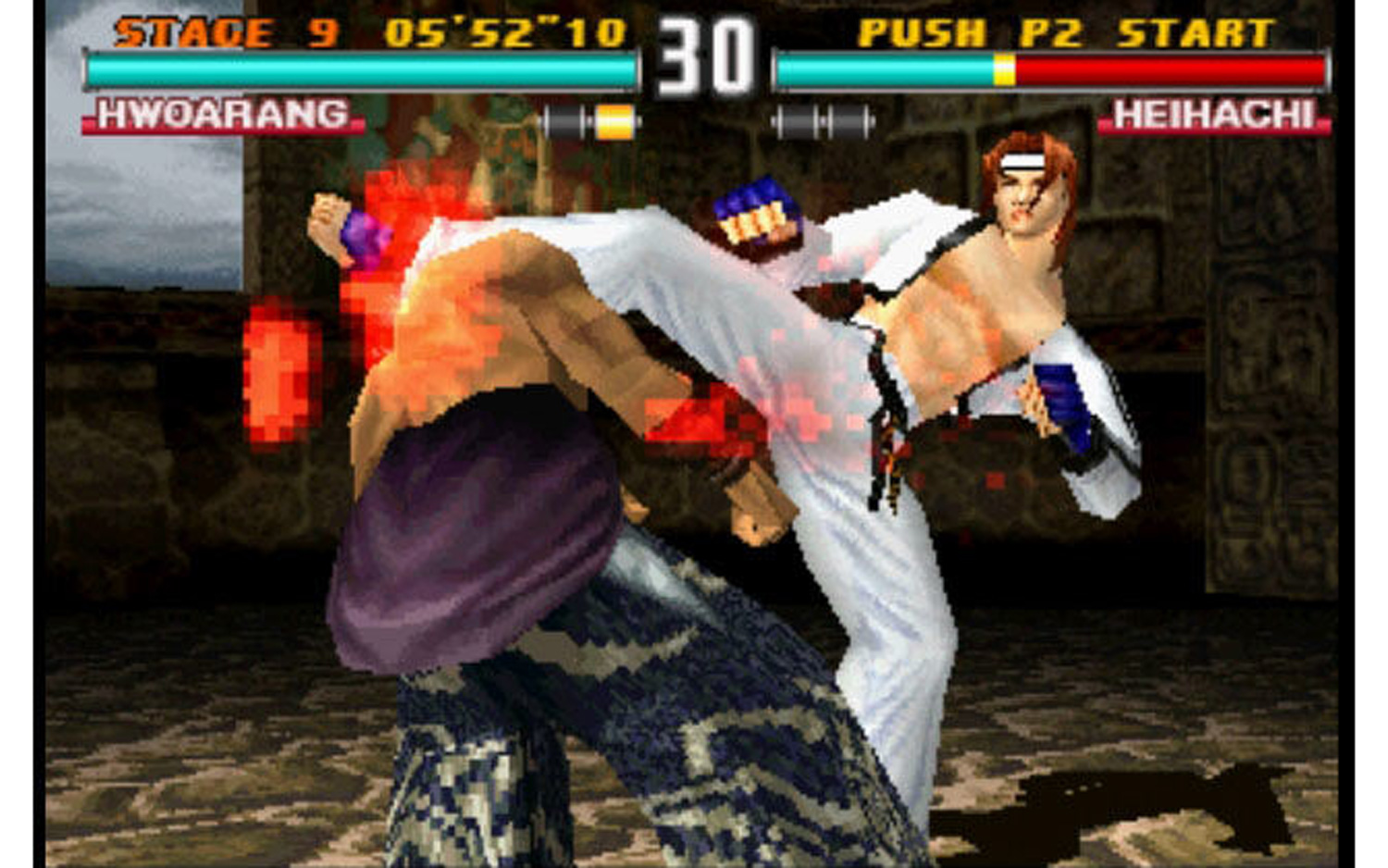
At best, the PlayStation's Classic roster is incomplete; at worst, it's a total mischaracterization of one of the most beloved gaming consoles of all time.
That's to say nothing of all the storied PlayStation names that didn't: from system-sellers like Crash Bandicoot, Gran Turismo and Tomb Raider to cult favorites like Castlevania: Symphony Of The Night, Suikoden and Xenogears. This was an era when Sony's first-party studios proved their ingenuity and willingness to take financial risks, through games like Ape Escape, PaRappa The Rapper and Vib-Ribbon – none of which are here.
Instead, the PlayStation Classic largely pins its hopes on the first two years of the system's life span, with a collection of games that merely sufficed in their day before the real heavy-hitters showed up. I know Jumping Flash has its fans, but to the uninitiated, it's a fever dream masquerading as a tech demo. Likewise, Cool Boarders 2 might have slid by in a world before 1080° Snowboarding, but things have changed. And I suppose Super Puzzle Fighter II Turbo is the nicest way to be let down easy for the absence of Street Fighter Alpha 3.
Where's the love?
Here's the thing, though — choosing a finite number of games to represent a system with a decade-long history is subjective. No two fans' ideal rosters will be the same, and although there might have been some odd inclusions in this particular case, some will be happy with the results.
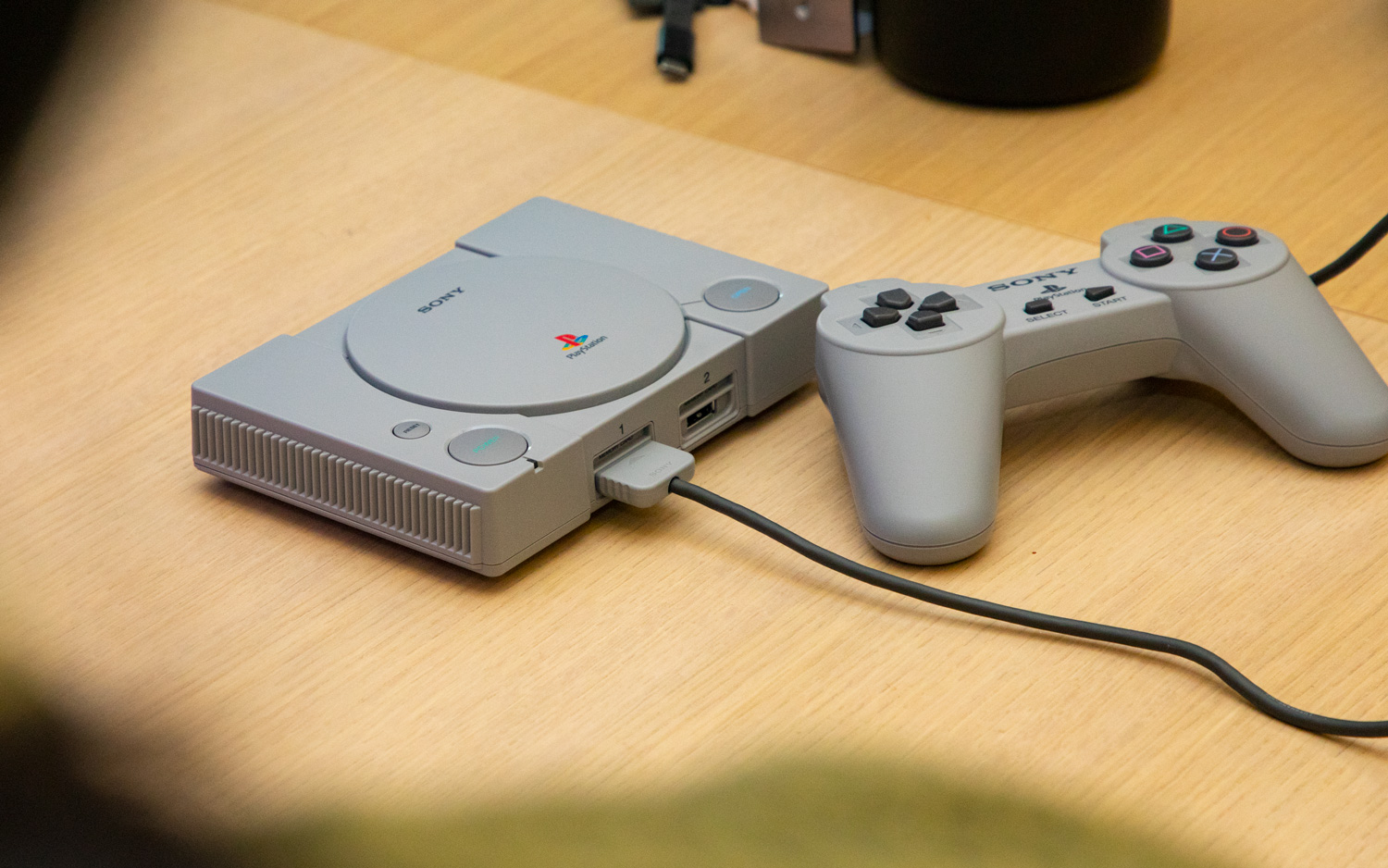
Those customers — the ones who are content with the library — are the ones that I feel particularly bad for. Because the PlayStation Classic ruins their favorite games.
The problem is partially down to the emulation software. The PlayStation Classic doesn't enhance the rendering resolution of these titles — fair enough, as that would necessitate more powerful hardware and assuredly jack up the cost. But it only upscales the 240p signal of PlayStation games to 720p at best, which looks downright grotesque on 4K displays.
To make matters much, much worse, Sony has employed what looks to be bilinear filtering in the hopes of blending those jagged polygons. There's no arguing it produces a smoother image, but it comes at the cost of overall fidelity and a steep reduction in color intensity, resulting in a blurry mess. Oh, and unlike playing original PlayStation games on the PS3 via backward compatibility, you can't turn it off.
The PlayStation Classic only upscales the 240p signal of PlayStation games to 720p at best, which looks downright grotesque on 4K displays.
In fact, there are no options to adjust the visuals of the 20 games whatsoever. I searched desperately to find a way to choose between sharp pixels or some kind of CRT mode, like the NES and SNES Classic allow. Given all the attention lavished on accuracy in the retro gaming scene nowadays, I'm astonished that Sony evidently made no provisions for any of that.
The real surprise, though, arrived when I booted up Ridge Racer Type 4 only to notice that something was amiss. You see, I love R4 — it's a game I adore and know the intricacies of very well, considering I assumed near-constant ownership of my video store's lone copy as a kid. (Buying it honestly would have been cheaper.)
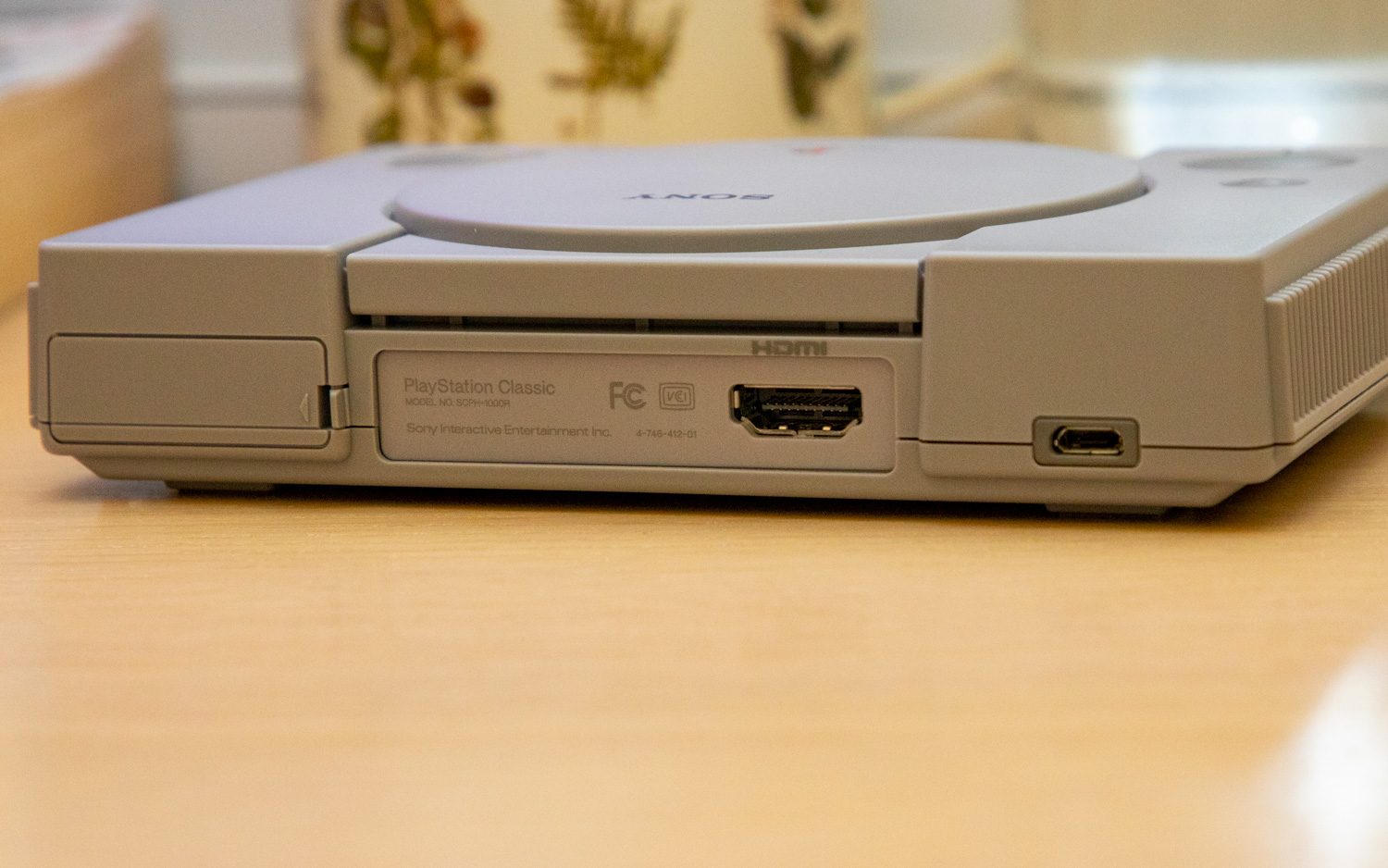
But R4 on the PlayStation Classic doesn't play like the R4 I knew. It's sluggish and hazy, and everything from menu animations to gameplay exhibits a strange ghosting effect, like it's all moving in slow motion. And as if that wasn't bad enough, many of the PlayStation's Classic's titles are PAL-formatted — which further complicates the whole shoddy emulation issue.
In the days before high definition, tube TVs in most of the world operated on one of two broadcast standards — NTSC or PAL. The primary difference between the two concerned lines of resolution and refresh rates. When it came to the latter, NTSC (used in North America) ran at 60Hz, while PAL (common in Europe) ran at 50Hz. Some games were optimized to account for this regional difference, though others weren't. As a result, many PAL games simply ended up running slower than their NTSC counterparts.
MORE: The 21 PS Classic Games We Want Next
The U.S. and European versions of Sony’s little console are pretty much identical, in so far as they contain the same games. About half of the roster is comprised of PAL ROMs — including Tekken 3 and Battle Arena Toshinden — and the rest are NTSC. Depending on where you grew up and what you're playing, you might find that one favorite childhood game you know like the back of your hand feels a little less responsive than you remember it.
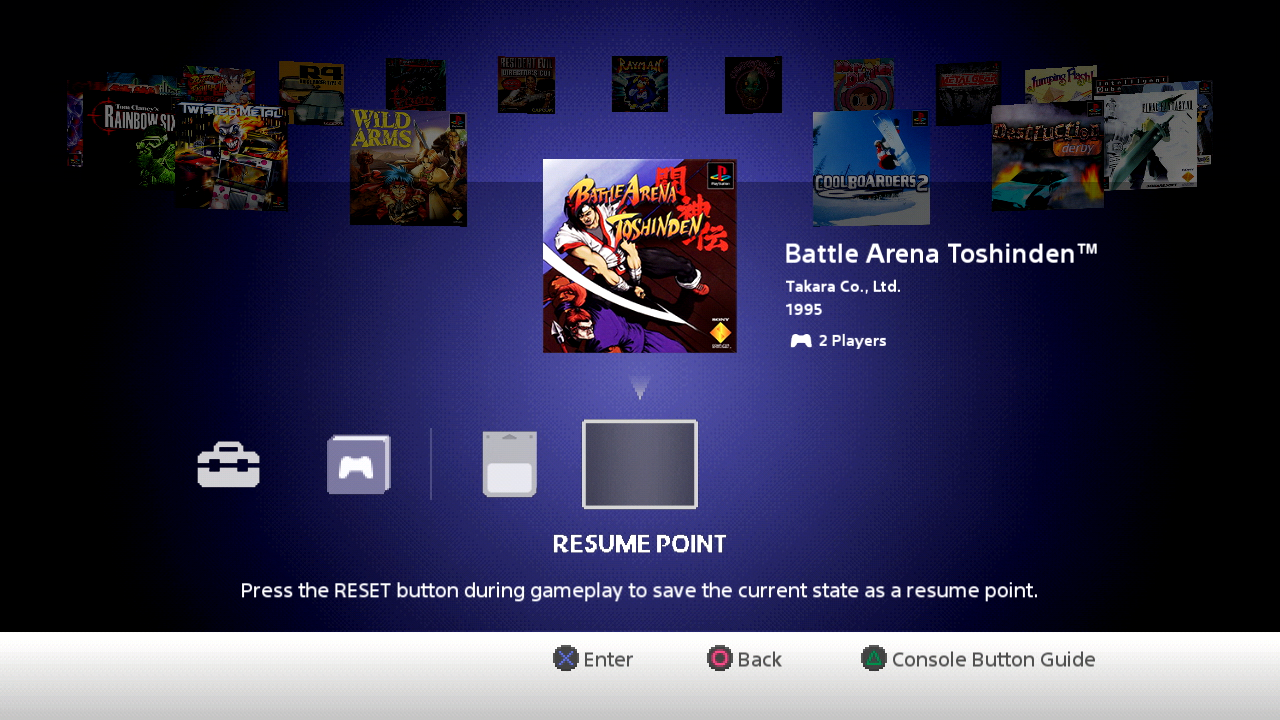
Finally, if we're nitpicking, the system's allowance of only one save state per game is inconvenient — though at least it saves actual game files to a virtual memory card, just like the PS3 did. When you return to the home screen, you're faced with an immediate yes-or-no choice between overwriting or not altering your save state. Every time I go through it, I worry I’ll accidentally select the wrong option.
Bottom line
The PlayStation Classic seemed like it was destined to be an easy sell — another retro console that'd end up being unattainable through the holiday season. Perhaps it'll still be hard to get. But even if it is, it won't be because it's good.
Sony's first stab at a Classic-style mini rendition of its hardware cuts far too many corners to do justice to the PlayStation legacy. For $100, you're getting low-resolution games that haven't been optimized for the latest HDTVs, passed through a smoothing filter that makes it look as if Vaseline has been smeared all over your screen.
And then there are the games themselves, which leave the PlayStation Classic feeling like a picture-perfect representation of the worst years of an otherwise prolific body of work. The plastic shell is a nice tribute, but it rings hollow without many of the titles that defined the system.
If you're looking for the best way to play PS1 games on a modern TV, either discs or downloads, track down a PS3 instead. It may not double as a cute desk toy, but at least it'll remind you why you fell in love with Sony's magical gray box in the first place.
Credit: Tom's Guide
Adam Ismail is a staff writer at Jalopnik and previously worked on Tom's Guide covering smartphones, car tech and gaming. His love for all things mobile began with the original Motorola Droid; since then he’s owned a variety of Android and iOS-powered handsets, refusing to stay loyal to one platform. His work has also appeared on Digital Trends and GTPlanet. When he’s not fiddling with the latest devices, he’s at an indie pop show, recording a podcast or playing Sega Dreamcast.
